
Cosmetics & Plastic Surgery: Debating Authentic Beauty en Español
Hamlet: I have heard of your paintings too, well enough. God has given you one face, and you make yourselves another.
Ophelia: Heavenly powers, restore him!
— William Shakespeare, Hamlet (1599), Act III, Scene 1
Argument-Centered Education and one of its partner high schools are engaged in an exciting new project: getting students to research, prepare arguments, discuss, write about, and debate about cosmetics, plastic surgery, and authentic beauty in an Advanced Placement Spanish class, so en español. While the resources ACE has provided are in English, all of the student work is in Spanish, and we are working with our partner teachers to produce translations of the curricular resources, as well.
The debatable issue is:
Cosmetics and plastic surgery can increase a person’s authentic beauty.
The AP Spanish unit that the project is built to teach is aesthetics. And in part because the resources are currently in English this project can be used to teach an aesthetics unit in a Theory of Knowledge course, for instance — or a sociology course, or gender relations unit in a current events course. To introduce the wider argument-centered instructional community to this breakthrough project, this post will walk through the Implementation Plan that guides it.
Day 1
Introduction to the unit: Cosmetics, Plastic Surgery, and Authentic Beauty, the debatable issue, and Table Debates
Distribute the Cosmetics, Plastic Surgery, and Authentic Beauty Media List

Distribute Argument-Based Reflection Questions
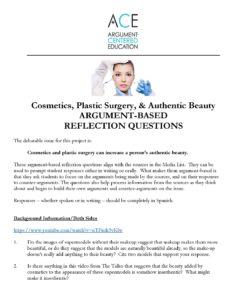
Screen the two background videos, twice each.
Pair students to answer questions in writing.
In between screenings, review the argument-based questions.
Share out and discuss.
Day 2
Conduct the Vocabulary Crowd Sourcing Activity on these Spanish Terms
Acentuar
Auténtico
Belleza
Características femininas
Cirugía plástica
Contraste
Culturalmente relative
Inauténtico
Maquillaje
Productos cosméticos

Day 3
Remind students of debatable issue.
Divide the class into two halves, and pair students into two-person teams within each half of the class.
Assign students their side of the debatable issue (use a side-preference form if you want to give students choice).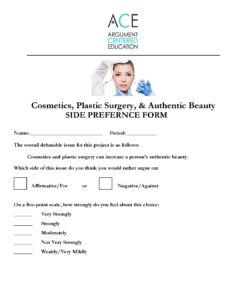
Distribute copies of the Video Annotator and assign students to use the annotator while viewing the videos.
Screen the three affirmative videos (the shorter two twice).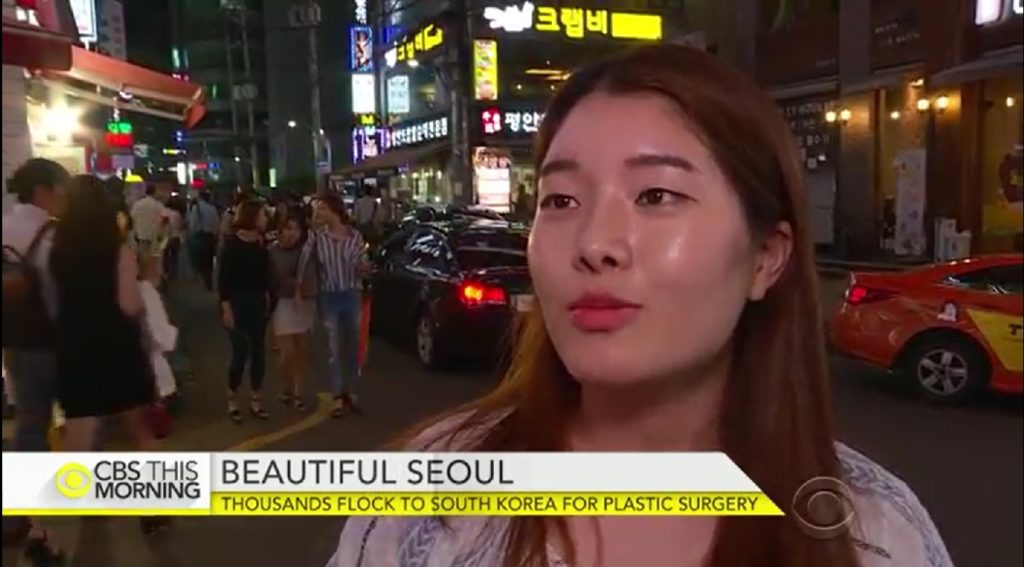
Have students complete the argument-based reflection questions on these three videos, in their two-person teams.
Collect and formatively assess.
Day 4
Distribute affirmative articles.
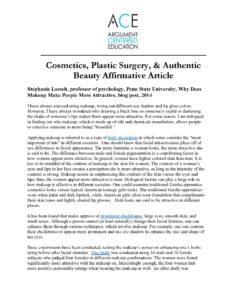
Model annotation strategies and ask students to annotate the articles, regardless of their side. 
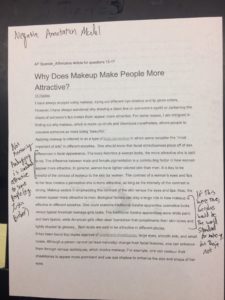
Have students work on responses to argument-based reflection questions in teams.
Day 5
Complete responses to these argument-based reflection questions in teams.
Conduct a classroom-wide argument-based discussion of the articles, using the questions to guide the discussion.
Day 6
View the negative videos.
Distribute additional Video Annotators and have students use them as they are viewing the videos.
Have students complete the argument-based reflection questions on these four videos, in their two-person teams.
Collect and formatively assess.
Day 7
Distribute negative articles.
Have students work on responses to argument-based reflection questions in teams.
Day 8
Complete responses to these argument-based reflection questions in teams.
Conduct a classroom-wide argument-based discussion of the articles, using the questions to guide the discussion.
Day 9
Distribute argument builder and counter-argument builder models.
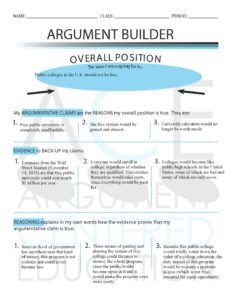
Provide direct instruction on the performance criteria for the use of evidence: alignment, credibility, sufficiency, and reasoning.
Discuss the ways that the models demonstrate high performance on each criterion.
Have students quick-write manufactured evidence for the model claims.
Discuss student work, in relation to evidence criteria.
Assign each team: formulate two argumentative claims for their position.
Day 10
List out argumentative claims on each side.
Discuss claims on the basis of the performance criteria: focus, clarity, separateness, directedness.
Supplement list of claims with prepared list.
Present argument building models.
Begin argument building.
Day 11
Continue argument building
Conduct individual team conferences to review argument building work.
Provide class-wide feedback on argument building, showcasing samples of student work.
Day 12
Continue and complete first draft of argument building.
Submit argument builders for formative assessment and feedback.
Day 13
Post Table Debate matches (two per team).
Review format for the Table Debates.
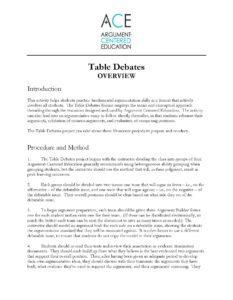
Provide feedback on argument builders.
Have students revise their argument builders.
Preview arguments for their debate opponents.
Day 14
Present counter-argument building models.
Supervise counter-argument building.
Orient students on Table Debates format and on the use of the flow sheet.

Day 15
Conduct Table Debates.
Showcase a leading Table Debate.
Collect and formatively assess flow sheets.
Assign argument essay, using templates, which will be the summative assessment of the project.
Concluding Notes
Several notes to consider upon conclusion of this walk-through of the Cosmetics, Plastic Surgery, & Authentic Beauty Table Debates Project en español.
This is the full-scale version of the project. It can be scaled back to meet a shorter available time-frame in class. So, for instance, a portion of the Media List might distributed; teams might be told to build a single counter-argument against each of their opposing teams’ arguments; and one table debate might be conducted rather than two.
The project is designed to be conducted in Spanish, but it doesn’t have to be. It works to achieve English language arts objectives equally well.
The reading and video lists are highly diverse, featuring arguments and figures from a range of races and ethnicities — a further advantage to implementing this project.
Assessment can be done with a modified version of Argument-Centered Education assessment instruments.
We think this project blends intrinsic interest, some fun, and a very high level of academic discourse and critical thinking goals. Let us know if you try it out what you find. And let us know how we can support your efforts and that of your school or district to bring similarly engaging argument-centered instruction to you on a systematic basis!

